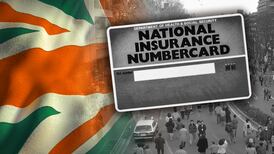In a year in which interest rates fell to unprecedented levels and house prices continued to climb, lenders tried to find new ways to convince mortgage customers to come back for more, amid fears of overborrowing.
With lending accelerating in 2003 and a feeling that the only way is up for interest rates, the Irish Financial Services Regulatory Authority (IFSRA) has signalled that it will seek a tightening-up in lending practices.
Remortgaging was all the rage again as established homeowners were told they could borrow at home-loan rates for all kinds of major outlays such as home improvements, holidays, children's education and deposits for their children's first home.
In January, EBS Building Society spurred a brief controversy with an emotive television advertisement for its new mortgage product, Family First, aimed at parents looking to help their children on to the elusive first step of the property ladder.
The mortgage allowed parents to borrow against the rising value of their home to raise a deposit for their kids, a trick upper-middle-class families had been doing for years through bog-standard remortgaging products.
EBS simply put a name to the practice. However, some, including the Irish Countrywomen's Association, felt the marketing campaign featuring an elderly, eager-to-please father and his demanding son promoted pester power to the tune of tens of thousands of euro.
The Advertising Standards Authority of Ireland (ASAI) rejected the complaints and EBS received more than 3,000 inquiries in the first month.
The big home-loan innovation to reach Irish shores in 2003 was the current account mortgage, a niche product that arrived in February courtesy of First Active.
It boasted a controversy-free advertisement in which an actor explained how the whole thing worked by playing with sand on a very clean beach.
With a current account mortgage, the balance on a customer's current account is deducted from the debt, cutting the mortgage interest payable on a daily basis.
Critics pointed out that any savings made on the interest owed could be wiped out by the fact that First Active's variable interest rate - then 4.24 per cent - was not the cheapest in town.
But, in September, First Active responded by cutting the rate to 3.29 per cent, the most competitive standard variable rate outside the tracker mortgage market.
Tracker mortgages, which guarantee to pass on cuts in the European Central Bank (ECB) rates, seemed like particularly good value this year, especially as many lenders waited until the Taoiseach intervened before passing on the ECB's cut of 0.5 of a percentage point in June.
The best time for locking into a fixed-rate loan came and went in July, as fixed rates started to creep up again in August in anticipation that interest rates will rise again next year.








